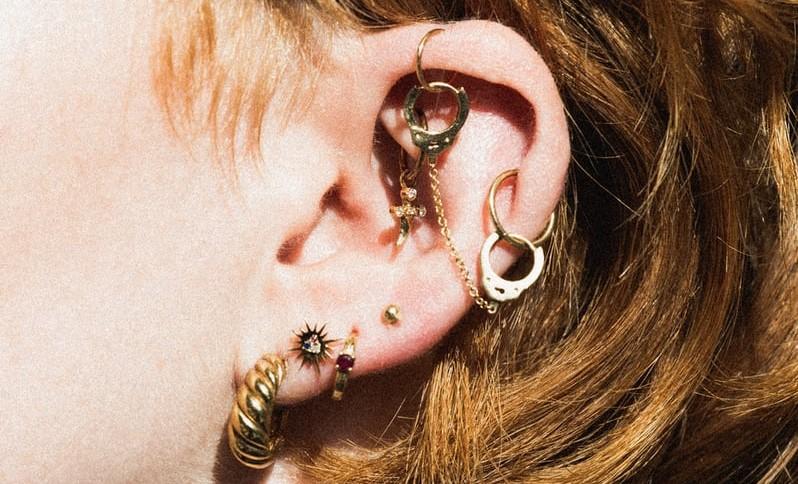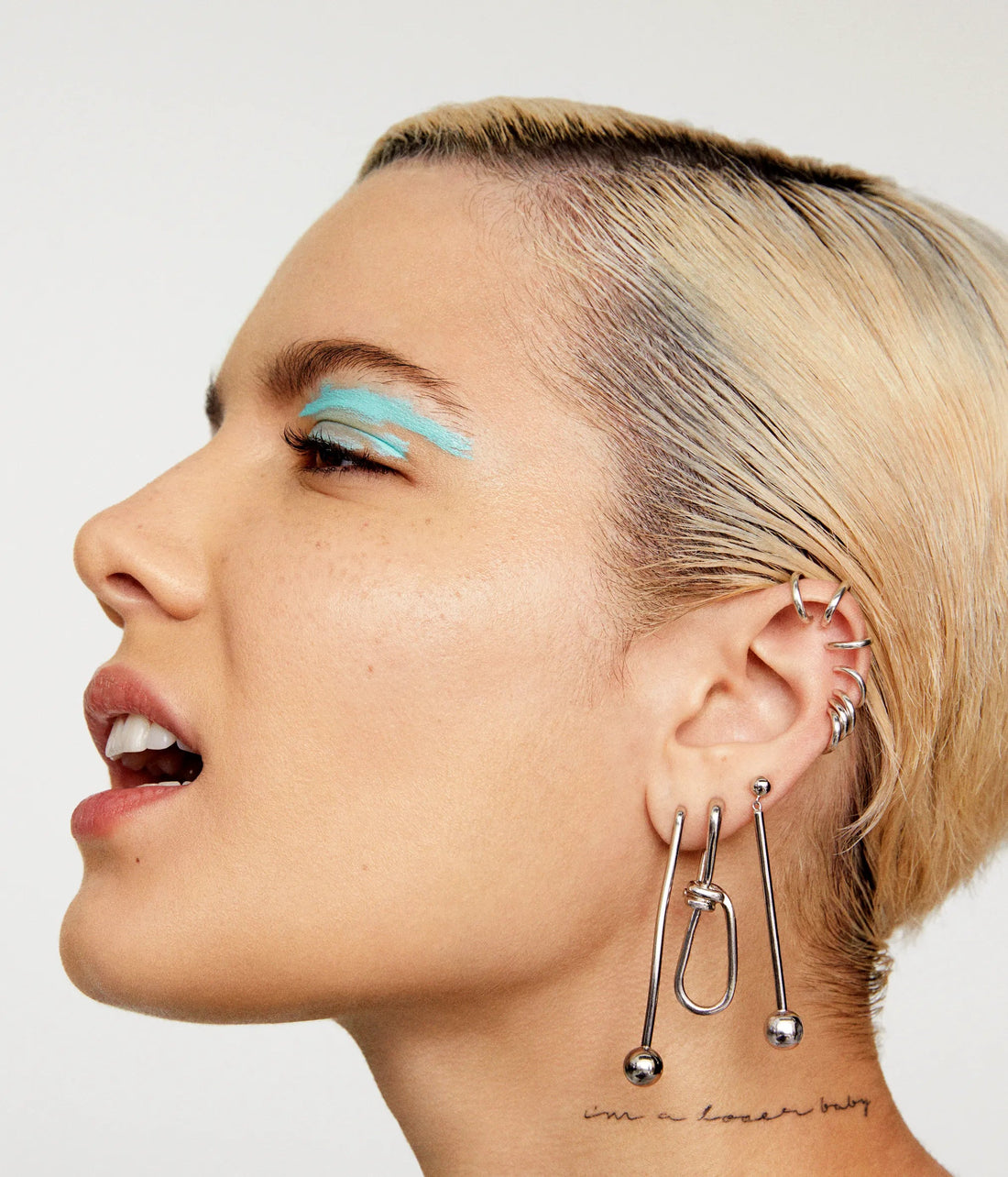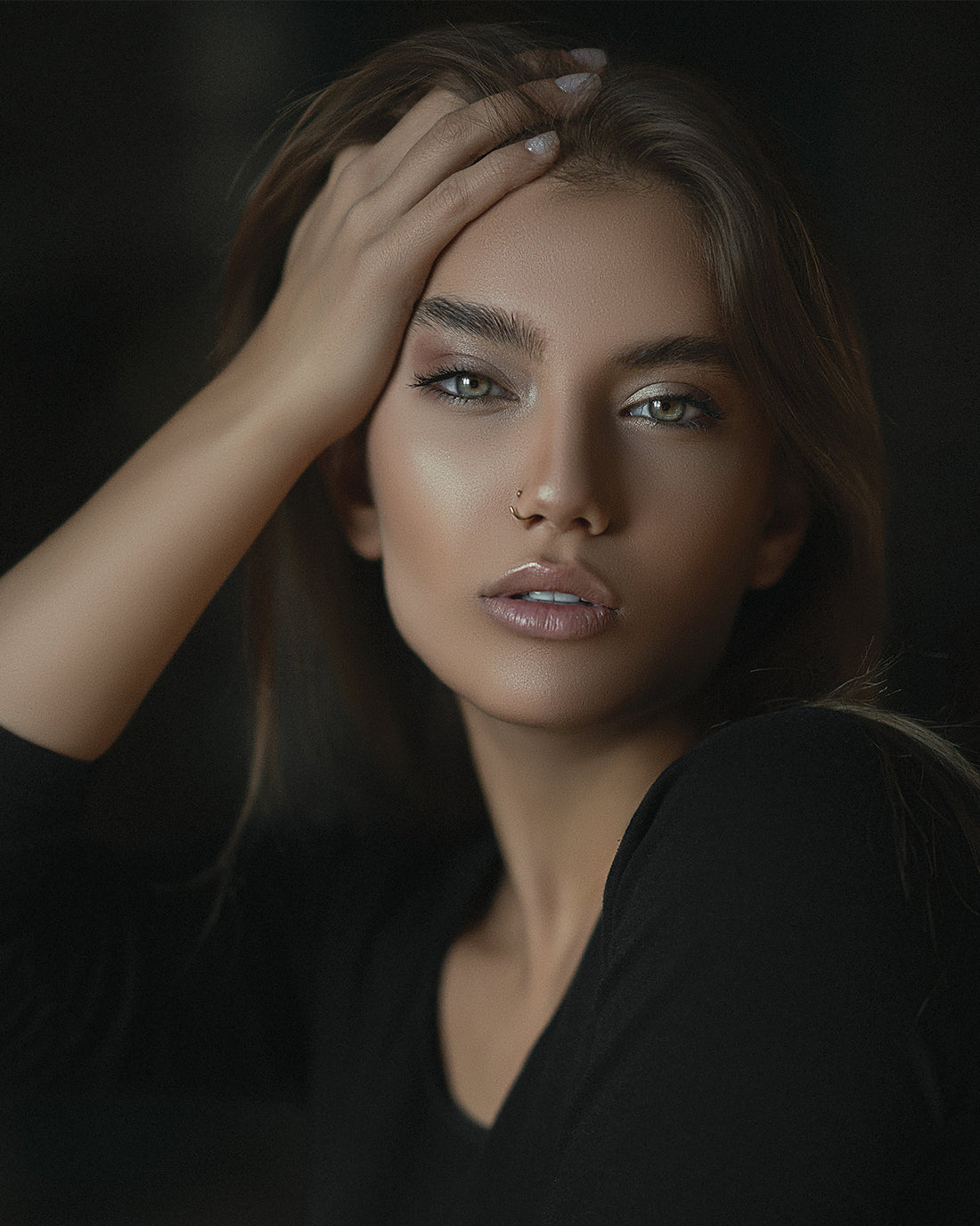This year has been a year of learning how to collect unexpected chaos moments and transform them into something meaningful. As we have all had to take a step back from each other, we have focused more on ourselves and our own well-beings. This has lead to the beautiful emergence of the rise of individuality within our society.
Like the chaos we have transformed this year, some of us have also done so with piercings clusters. With an amount that may seem overwhelming, chaotic even, ear jewelry clusters have been arranged in such a visually appealing way that it becomes a curated work of art.
What Are Curated Ear Piercings?
One of the biggest piercing trends this year has been stacked ear jewelry. One can easily find photos of "ear curations" or ear jewelry collections all over social media, usually consisting of tasteful combinations of a delicious array of jewelry styles and ear piercings. Pairing studs with rings, bars, and dangling ear jewelry can make for an interestingly layered composition.
There are many different types of ear piercings, and each with its own name. We will go over the different types, what they are, and inspiration for your own ear curation.

Earlobe-
- The most common ear piercing, in the lobule, the most fleshy part in the ear lobe, usually pierced right in the center.
- Quick healing time, 4-8 weeks.
- Ring-style or bar-style jewelry can be used for initial piercing.
- Can use a wide array of jewelry.
- Standard lobe piercing size is usually 20g - 18g, although some piercing professionals will do 16g - 14g.
- Knowing the size of your piercing is important as this will help you determine which size jewelry you can purchase for your lobes.
- Shop ear lobe jewelry here - https://www.bodyj4you.com/collections/earrings
Upper Lobe-
- placed just above the standard lobe piercing. This type of piercing is usually placed to the side of the center of the ear lobe toward the outer edge of the ear.
- Quick healing time, 4-8 weeks.
- Ring-style or bar-style jewelry can be used for initial piercing.
- Standard lobe piercing size is usually 20g - 18g, although some piercing professionals will do 16g - 14g.
- Shop ear lobe jewelry here - https://www.bodyj4you.com/collections/earrings
Ear Cartilage Piercings-
Helix-
- this piercing placed by the curved outer rim of the ear. Ring style jewelry is best for initial piercing.
- Or Scapha- placed on the flatter portion of the cartilage where the helix curves, the right end of the industrial bar on the chart. Studs or ring style jewelry for initial piercing.
- Longer healing time, 3-9 months or longer.
- Piercing size 16g and 14g with the most common being 16g.
"Floating" Cartilage or Flat-
- Placed in the “flat” towards the center away from the edge.
- Studs or a ring large enough to envelop the helix (the outer rim of your ear) for initial piercing jewelry.
- Piercing size 16g and 14g with the most common being 16g.
Tragus-
- Placed above the earlobe, on the cartilage that connects to the face.
- 3-9 months or longer to heal.
- Small barbell for initial piercing jewelry.
- Important to pick jewelry that fits well, not too small or large, so that the tragus piercing does not get caught on the anti-tragus cartilage.
- Large jewelry can look and feel awkward in this piercing. Small dainty jewelry really complements the position.
- Piercing size 16g and 14g with the most common being 16g.
Antitragus-
- Placed in the rise of the cartilage above the earlobe. Ring, curved bar, mini barbell, barbell jewelry for initial piercing. Bar style jewelry may be more comfortable. 3-9 months to heal.
- Piercing size 16g and 14g with the most common being 16g.
Surface Tragus-
- Placed more toward the face from the tragus.
- Piercing size 16g and 14g with the most common being 16g.
Conch-
- Placed down in the deep central bowl-shaped section of the ear.
- Heals in 3-9 months or longer (commonly 6 months).
- Start initially with a barbell to heal better since a ring is subject to excess trauma.
- After healing, ring style or stud jewelry can be used.
- Piercing size 16g and 14g with the most common being 16g.
Rook-
- In the cartilage near the face on the upper part of the ear.
- Heals in 3-9 months or longer (commonly 6 months).
- Ring or curved bar to start. Jewelry can be placed in the center of the ridge or closer to the face.
- To consider: if you have a phone or headphones up against your ears a lot, this may not be the piercing for you due to the discomfort you will feel from the pressure on the piercing.
- Piercing size 18g and 16g with the most common being 16g.
Daith-
- Right beneath the Rook piercing and above the tragus cartilage toward the inner shell of the ear.
- 3-9 months or longer to heal.
- Ring or curved bar to start with for initial piercing jewelry.
- An attractive piercing that frames the tissue.
- Most common daith piercing size is 16g
Ear head or Forward Helix-
- Placed on the upper part of the ear (helix) that connects to the head.
- 3-9 months or longer to heal.
- Ring, barbell, or mini barbell for initial piercing jewelry.
- If you wear eyeglasses or sunglasses, show your piercer where they lay on your ears so that the piercing can be placed appropriately for comfort.
- Piercing size 16g and 14g with the most common being 16g.
Antihelix or Snug-
- Placed usually across from the Tragus toward the ear’s outer edge, the rook piercing is placed farther down on the same ridge.
- 3-9 months or longer to heal.
- Curved barbell, or if you have a well-defined ear, a ring can be used for initial piercing jewelry.
- To consider: If you talk with the phone up to your ear a lot or have pressure from headphones, this may be an uncomfortable piercing for you.
- Piercing size 16g and 14g with the most common being 16g.
Inspiration For Ear Piercing Curations

When creating an ear-piercing composition, adding jewelry pieces that create asymmetry instantly adds interest. Jewelry that connects two piercings at an angle or clusters of jewelry at opposite ends of the ear can do so. Asymmetry allows for an unexpected uniqueness in the curation. Traditional ways to adorn the ears are in the past, and now wearing mismatching earrings and combining one of a kind finds peaks our modern interest. The beauty of the unexpected is gravitational.



If you have any anecdotes to share, please leave us a comment! We will add it to this post.
Shop EAR JEWELRY, PIERCING KITS, and AFTERCARE here: SHOP NOW


